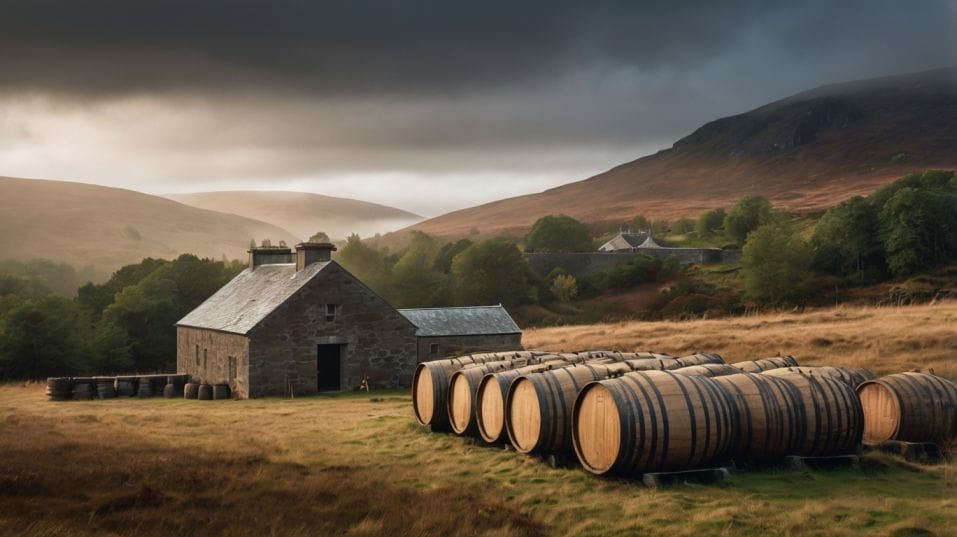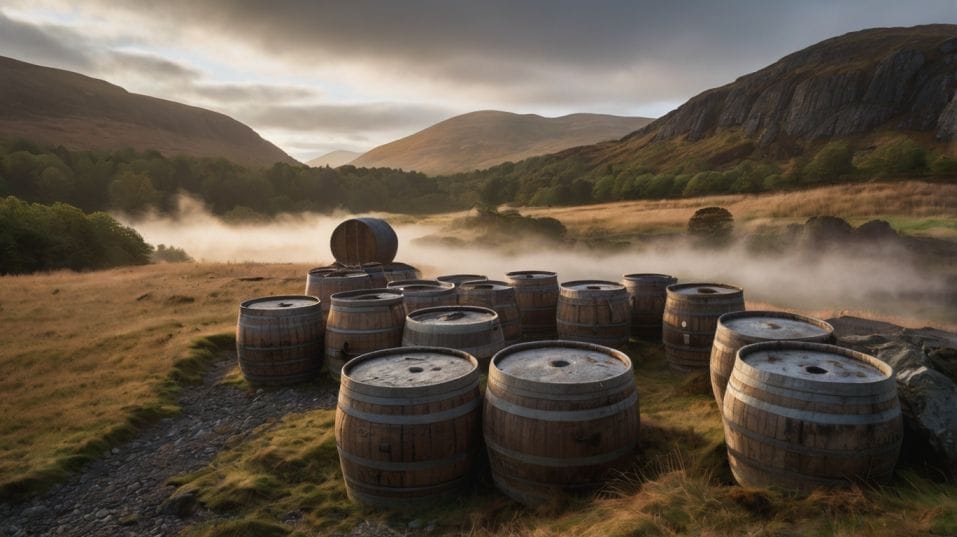Speyside vs Islay: Choose Based on Your Personality
Speyside or Islay? Discover which iconic Scotch region fits your taste and personality. Learn, collect, and sip with clarity and confidence.

What does your whiskey say about you? If you're new to Scotch but serious about learning, you’ve likely heard of Speyside and Islay—two iconic regions with radically different styles. One whispers. One roars.
But this choice isn’t just about taste—it’s about temperament. Start here, and you won’t just drink whiskey. You’ll understand it. So which path sharpens your palate and fits your mindset? Let’s find out.
Speyside: Clarity Through Complexity
Speyside doesn’t hit you over the head. It draws you in. Located in northeast Scotland, this region is home to the highest concentration of distilleries in the country. But it’s not about quantity—it’s about balance, precision, and craft.
If you’re naturally analytical, Speyside rewards that instinct. These whiskies teach you how to taste deep, not loud. You won’t always find the punch of peat or the slap of salt. What you will find is control. Nuance. Evolution.
Most Speyside malts are aged in sherry or ex-bourbon casks, leading to rich, layered notes: stewed apples, fig, toasted almonds, butterscotch, baking spices.
And they don’t all taste the same. Some lean dessert-sweet. Others go dry, with tannic grip and wood spice.

When you taste Speyside, pay attention to how the flavors unfold. Don’t rush the first sip. Let the whiskey bloom in your glass.
Nose it with your mouth slightly open to catch both the volatile highs and deeper, oak-driven lows. A small splash of water can open hidden layers—floral tones, citrus oils, malt sweetness.
For the collector, Speyside is fertile ground. Many distilleries offer age-statement releases and limited editions that develop complexity over time.
These bottles often appreciate in both flavor and market value. Look for single-cask bottlings—they’re not always flashy, but they’re often unforgettable.
More importantly, Speyside teaches patience. If you learn to read a subtle whiskey now, everything else will make more sense later. It’s the foundation of a smart whiskey palate.
Islay: Distillate with a Pulse
Islay doesn’t care if you’re ready. It doesn’t wait for you to catch up. This windswept island off Scotland’s west coast produces some of the boldest, most unmistakable whiskies in the world. You either lean in—or you don’t come back.
Peat defines Islay, but it’s not just about smoke. It’s about identity. Peat is the fingerprint—the thing that makes Islay unmistakable in a blind tasting.
It shows up as smoke, yes, but also tar, iodine, seaweed, scorched herbs, burning driftwood. Sounds aggressive? It is. But it’s also beautiful, if you know how to listen.
Islay attracts people who want more from their whiskey. More intensity. More confrontation. If Speyside is jazz, Islay is punk. The best bottles feel alive.
Texture matters. So does the finish. An Islay malt can linger for minutes, dragging its smoky fingerprints across your palate long after the glass is empty.
But don’t mistake boldness for chaos. Great Islay whiskies are structured. Underneath the fire, there’s flavor: salted caramel, citrus pith, black pepper, honeyed barley. Even the heavy hitters have balance—if you know how to look.
Tasting Islay is active. This isn’t a casual pour during a movie. Give it focus. Taste side by side with unpeated drams.
Note how peat changes the mouthfeel, the finish, even the way the alcohol carries aroma. This kind of contrast builds awareness fast—and makes you a sharper taster across the board.
Islay also brings out the collector’s instinct. You’ll chase bottlings by peat level, by cask type, by distillation date.
Islay’s limited editions sell fast—and for good reason. They're not designed for trend-chasers. They’re made for drinkers who know what they’re after.
Tasting Style as Identity
Think of whiskey not just as something you drink—but something that reflects how you think. Your flavor preferences reveal your personality. That’s not hype. That’s how taste works.
Speyside: The Observer
Speyside is for those who observe. If you value structure, if you’re the type to listen first and speak second, if you’re interested in how flavors move and change—Speyside trains your palate the way a classical musician trains their ear.
Subtle notes become loud. Small shifts feel massive.
Islay: The Challenger
Islay is for the defiant. If you thrive on challenge, if you don’t want your drinks to play nice, if you’d rather be hit with a big idea than lulled by a quiet one—Islay will push you to trust your instincts. It forces you to taste with conviction.
This isn’t about one being better than the other. It’s about fit. You can respect both, even love both.
But when you start with the one that matches your style, you learn faster. You enjoy more. You waste less time chasing bottles that don’t belong on your shelf.
Final Thoughts: Build with Purpose
You’re not just buying bottles—you’re building a palate. Maybe even a collection. Maybe a lifelong obsession. That starts with intention.
Choose Speyside if you want to sharpen your sensitivity to detail, balance, and complexity. It will teach you how to taste with focus, how to recognize depth, and how to tell the difference between smooth and skillful.
Choose Islay if you want intensity, clarity, and challenge. It will stretch your palate, test your limits, and open the door to flavors most drinkers never get past.
You don’t need to become an expert overnight. You just need to taste like you mean it. So pick a region that speaks to your personality.
Pour something deliberate. Taste it side by side with something different. Take notes. Pay attention. Then do it again next week.
That’s how you stop drinking like a tourist—and start drinking like a student of flavor. Now: Speyside or Islay? Your move.




